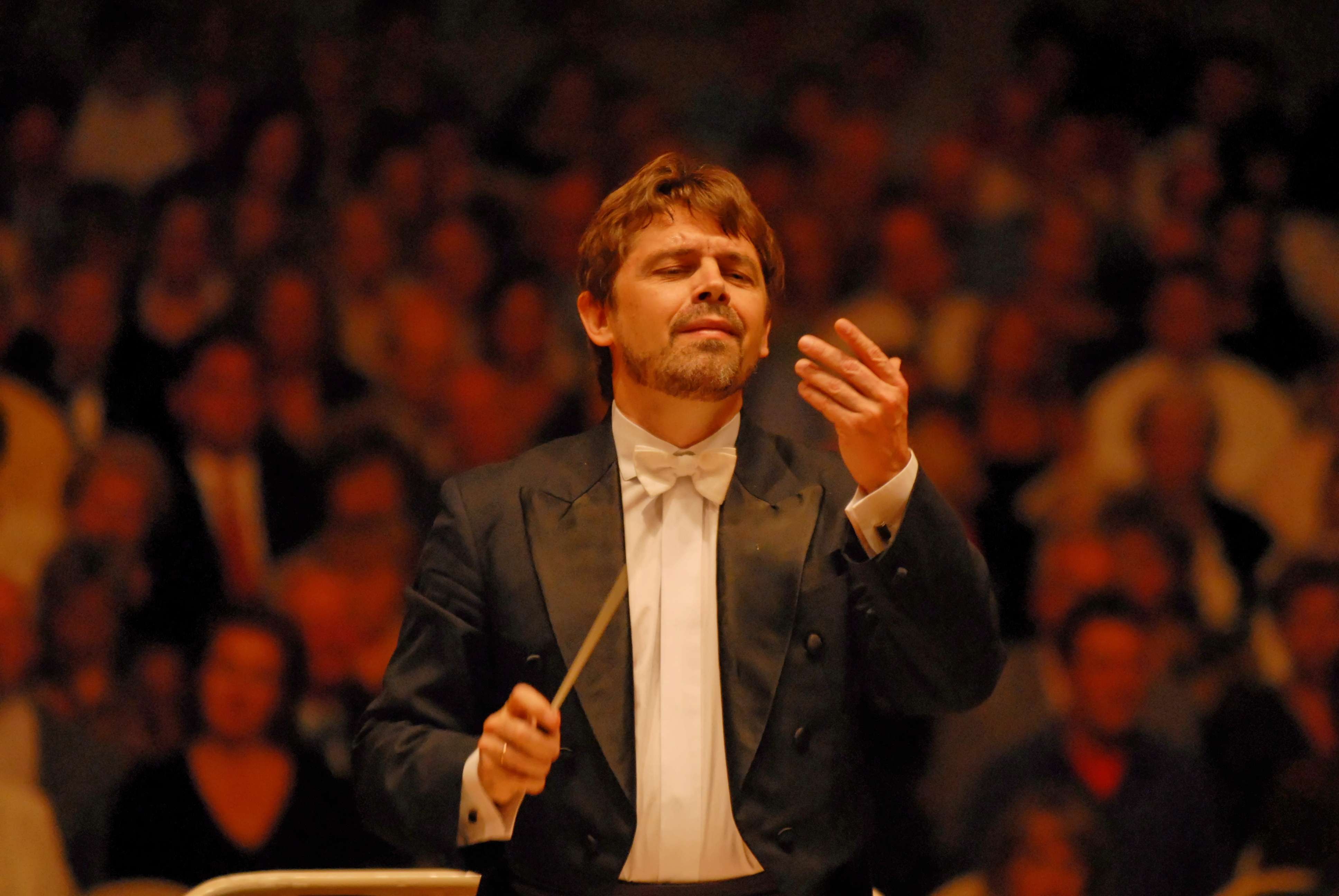|
Back
On Following a Tough Act Houston
Jones Hall
11/21/2013 - and November 23*, 24, 2013
Richard Wagner: Der fliegende Holländer: Overture
Christopher Rouse: Der gerettete Alberich
Peter Ilyich Tchaikovsky: Symphony No. 4 in F Minor, op. 36
Colin Currie (percussion)
Houston Symphony, Andrey Boreyko (conductor) 
A. Boreyko (© Richard de Stoutz)
The stunning first concert with the Houston Symphony’s new Music Director Designate, Andrés Orozco-Estrada, is a tough act to follow. Andrey Boreyko and Colin Currie, two wholly consummate musicians, attempted the challenge with a traditionally-structured overture-concerto-symphony formula that had a relatively new work as its centerpiece. Stunning playing and impressive podium choreography, however, didn’t quite add up to a wholly satisfying musical experience.
Wagner’s sturdy overture thundered forth, the horns resplendently trumpeting their fanfares and strings replying with tempestuous swirls, but a lack of the last degree of coordination robbed the piece of its potency. Slightly skewed attacks stemmed from Boreyko’s physical mannerisms, which were aimed at large-scale shaping of phrases (some of which worked, some of which didn’t) instead of offering the precise ictuses the orchestra needed to play with utmost rhythmic security. This aspect of the performance, which was completely absent when Orozco-Estrada was on the podium, persisted throughout the remainder of the concert.
Colin Currie is great fun to watch and hear, but it’s a shame he hasn’t brought a more substantial work to the Jones Hall stage than Einojuhani Rautavaara’s Incantations, given two seasons ago, or Rouse’s visually impressive but musically flimsy concoction. The work is too expected to excite. Rhythmic moments are paired with tom-toms and other unpitched percussion, lyrical moments paired with marimba and pitched percussion. The figurations on the panoply of instruments allowed Currie to display his impressive virtuosity, but their musical substance was impossible to discern. Mr. Currie also didn’t play up the theatrical aspects of the piece the way its dedicatee, Evelyn Glennie, does, but even that likely wouldn’t make for a more convincing affair. Indeed, the most interesting percussion writing conjured by Mr. Rouse occurs in the final moments of the piece, but for the orchestral section rather than the featured soloist. Mr. Currie plays a mean rendition of James MacMillan’s magisterial Veni, Veni, Emmanuel if his Naxos recording is to be believed, and one hopes that work or one of his more recent ventures will be next on his Houston agenda.
After intermission, Tchaikovsky’s Fourth Symphony should have been a stirring affair, but some of the miscues that affected the Wagner overture returned to blur the excellent playing offered to Mr. Boreyko by the orchestra’s musicians. The most successful moments of the evening occurred in the symphony’s second movement. The in modo di canzona indication was taken to heart by oboe and bassoon, whose expertly etched melodic lines proved that softness, refinement and elegance are almost always more memorable than bombast. The excellence of the solo playing throughout the piece further confirmed the suspicions that the sloppiness of tutti passages stemmed from the podium, where Boreyko became increasingly balletic as the symphony progressed. The last movement fell flat, the slightly-too-slow tempo and slight rhythmic miscoordinations counteracting the piece’s intrinsic momentum. The return of the fate motive near the end brought Boreyko’s one interpretive exaggeration of the night, a pregnant pause before the progressive vanquishing of the work’s darkness and transition to Tchaikovsky’s dashing coda.
Marcus Karl Maroney
|